RECOIL OFFGRID Survival Comparing the .22 Caliber SIG Sauer ASP20 and Benjamin Vaporizer Airguns
In This Article
If you’re considering including an airgun in your SHTF kit, or are just looking for a reasonably priced, self-contained airgun to handle pests and vermin around the farm or homestead, perhaps this review will make your search a bit easier.
Break-barrel airguns, or “springers,” lend themselves admirably to survival because the powerplant of a spring or gas-ram is built-in. This means that no additional accoutrements, other than pellets, are required to put the airgun into operation. As with anything, there are pros and cons to these types of airguns for any intended purpose. Pros include sustainability, low cost to purchase and operate, low maintenance, and power.
Cons associated with springers include weight (they tend to be heavy), noise (they can be loud due to the power levels reached), steep learning curve (the “artillery hold” method is necessary to obtain best accuracy potential), and the fact that they can be finicky when it comes to the ammo they shoot best.

So, for a bug-out scenario, some practice and testing of various pellets is mandatory to ensure you’ve got a viable survival tool. However, once that’s out of the way, you’ll have a self-contained lead-launcher with a supply of inexpensive and readily available ammunition that happens to have a long shelf life. Unlike most traditional firearms, it can be used to obtain small game without a huge sound signature and no smoke, spent brass, or other telltale signs of your presence.
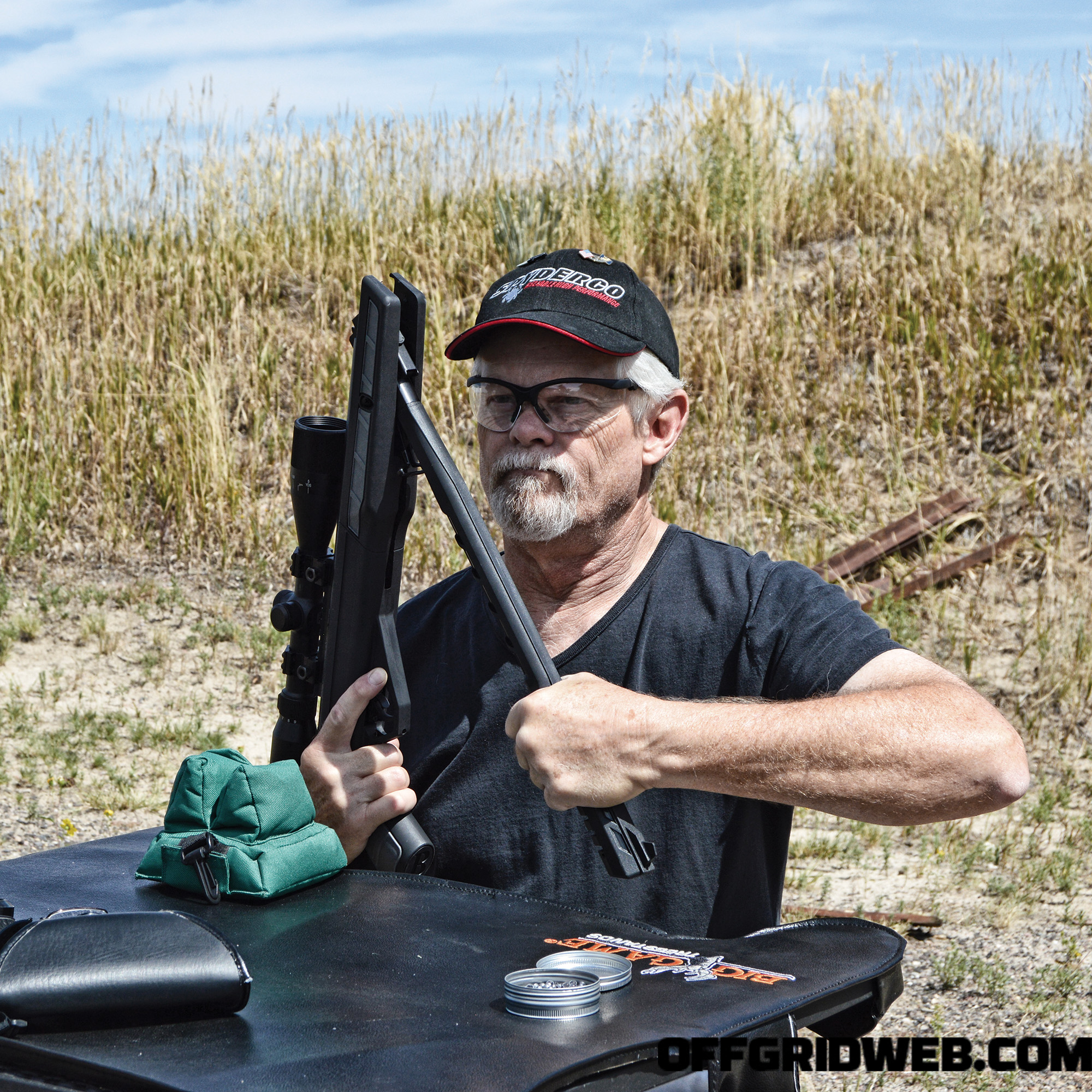
Far from the low-power airguns you may have grown up with, these two models require a fair amount of cocking force to...
These two air rifles operate the same way — that is, after the safety is applied, the barrel is tapped on top near the muzzle to “break” it downward and then continue pulling the barrel in a downward arc to cock the powerplant. (Be careful to keep fingers out of the trigger guard and don’t let go of the barrel before the sear has engaged — the barrel could violently slam shut.) A pellet is inserted into the breech and the barrel is closed, readying the rifle for firing. In this case, both air rifles utilize gas ram technology similar to the gas struts you may be used to — for example, the arms that hold up the hood of your vehicle or back window of your camper shell.
This tech has been prevalent in airguns for a few years and offers improvements over the coiled-spring mechanisms still found in some airguns by eliminating “spring slap,” which makes the guns noisier and the firing sequence less smooth. Additionally, springers with gas rams are less susceptible to temperature fluctuations and can be left cocked for a period of time without serious consequences. Old-style spring-powered airguns should not be left cocked, since the spring will take a “set” in a fairly short period of time and render the airgun practically useless and in need of repair. These types of airguns also require a break-in period, usually about 100 shots, in order to become consistent and settle down.
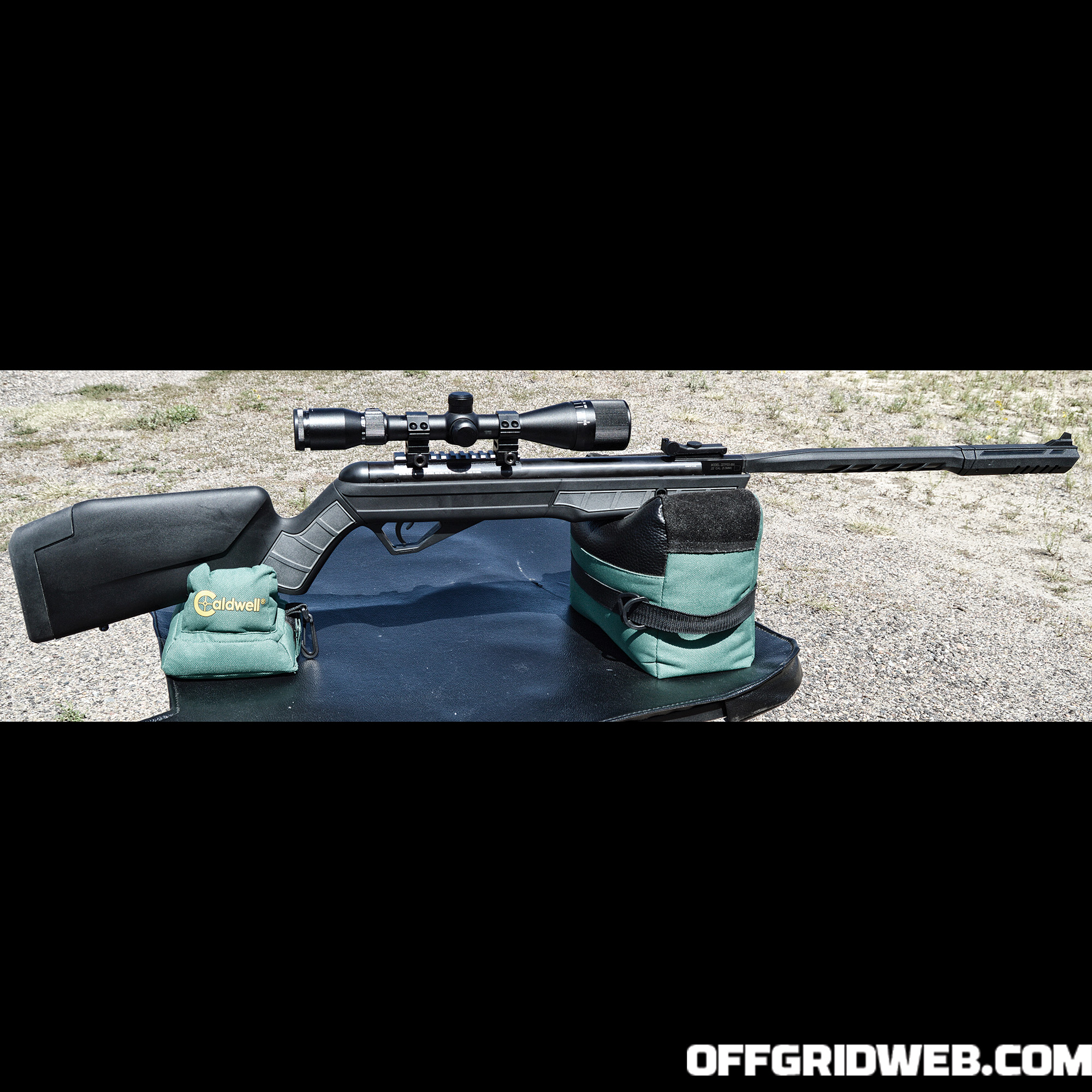
The Benjamin Vaporizer is a handsome rifle, with contrasting inserts and a sleek barrel shroud/moderator.
Both airguns were single-shot models in .22 caliber with ambidextrous stocks sporting thick rubber buttpads. Both utilize gas ram (aka piston) powerplants and were scoped with their respective company’s telescopic sights — Whiskey3ASP 4-12x44mm with Adjustable Objective on the ASP20; CenterPoint 3-9×40 with Adjustable Objective bell on the Vaporizer. Both feature sound moderators on the muzzles. Neither has an automatic safety that engages upon cocking the rifle. Both are equipped with two-stage adjustable trigger units, and both guns’ triggers are made of plastic. Both offer Picatinny rail sections for mounting of optics. Lastly, both are full-length rifles. That’s where the similarities end.
Sig Sauer points out that the ASP20 (short for Advanced Sport Pellet) was purpose-designed and built in the USA. When they made the decision to enter the airgun market, they utilized engineers from their firearms division to make it happen. SIG engineering and materials knowhow was used to create an all-American product. Of course, that kind of R&D associated with a name brand such as SIG translates to an air rifle that pushes the cost needle northward when it comes to break-barrels on the market — not to say it isn’t worth it.
The wood stock, while a bit slippery feeling, is extremely well-finished and has laser stippling in all the right places for grip. The Sig Sauer logos are crisp and tastefully done and the overall design has a European vibe, very much like you’d find on Sig Sauer firearms. Also, for the price you get the benefit of new technologies such as the proprietary breech-locking system. Designed with tapered wings on both sides of the barrel, it produces a keystone wedge solid lockup each time the barrel is closed. Plus, the barrel and receiver assembly are drilled together for the pivot pin rather than two separate pieces mated together later on, further increasing the accuracy of the rifle.
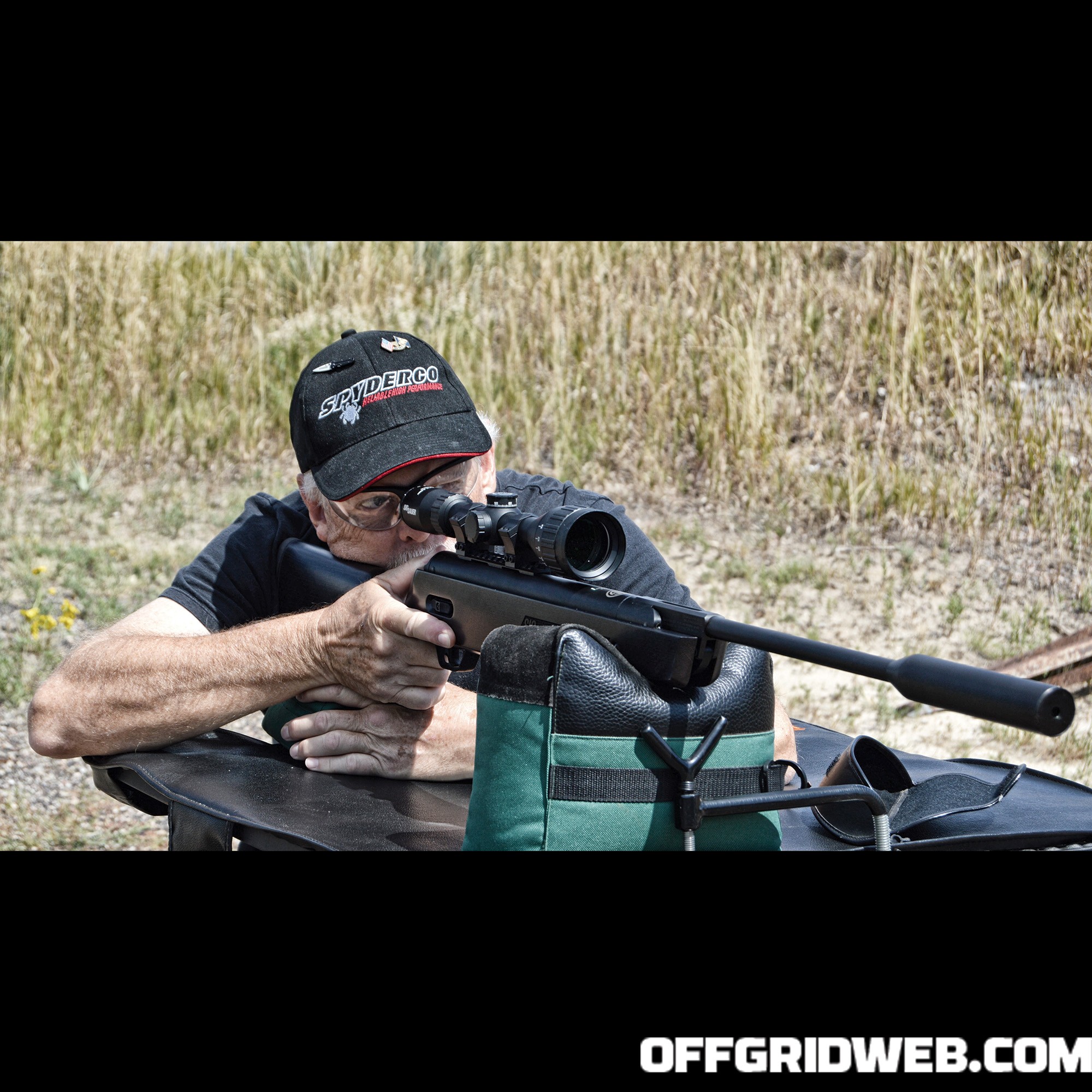
The SIG ASP20 with its accompanying SIG Whiskey3 scope designed for break-barrel air rifles is a dynamic combination.
The cocking effort has been reduced with Sig Sauer’s proprietary GlideLight mechanism, giving magnum power for around 33 pounds of cocking force when normally 40 or 50 pounds of force would be required. The metal is well-finished in matte black Nitron, the same finish they apply to their firearms. The sliding safety is accessible on both sides of the stock for easy ambidextrous manipulation with the trigger finger. Speaking of triggers, this MatchLite has a flat trigger blade, popular these days on long-range precision rifles. The factory settings are considered optimized by SIG, but are user-adjustable with the included tools.
The Benjamin Vaporizer is synthetic-stocked only, with soft touch inserts at the gripping surfaces and a molded-in cheekpiece. The finish is good with no sharp edges or flashing needing to be trimmed. The metal receiver was well-finished in a black satin. The steel barrel has a polymer overlay ending in the polymer SBD (Silencing Barrel Device) giving an overall futuristic look to the Vaporizer.
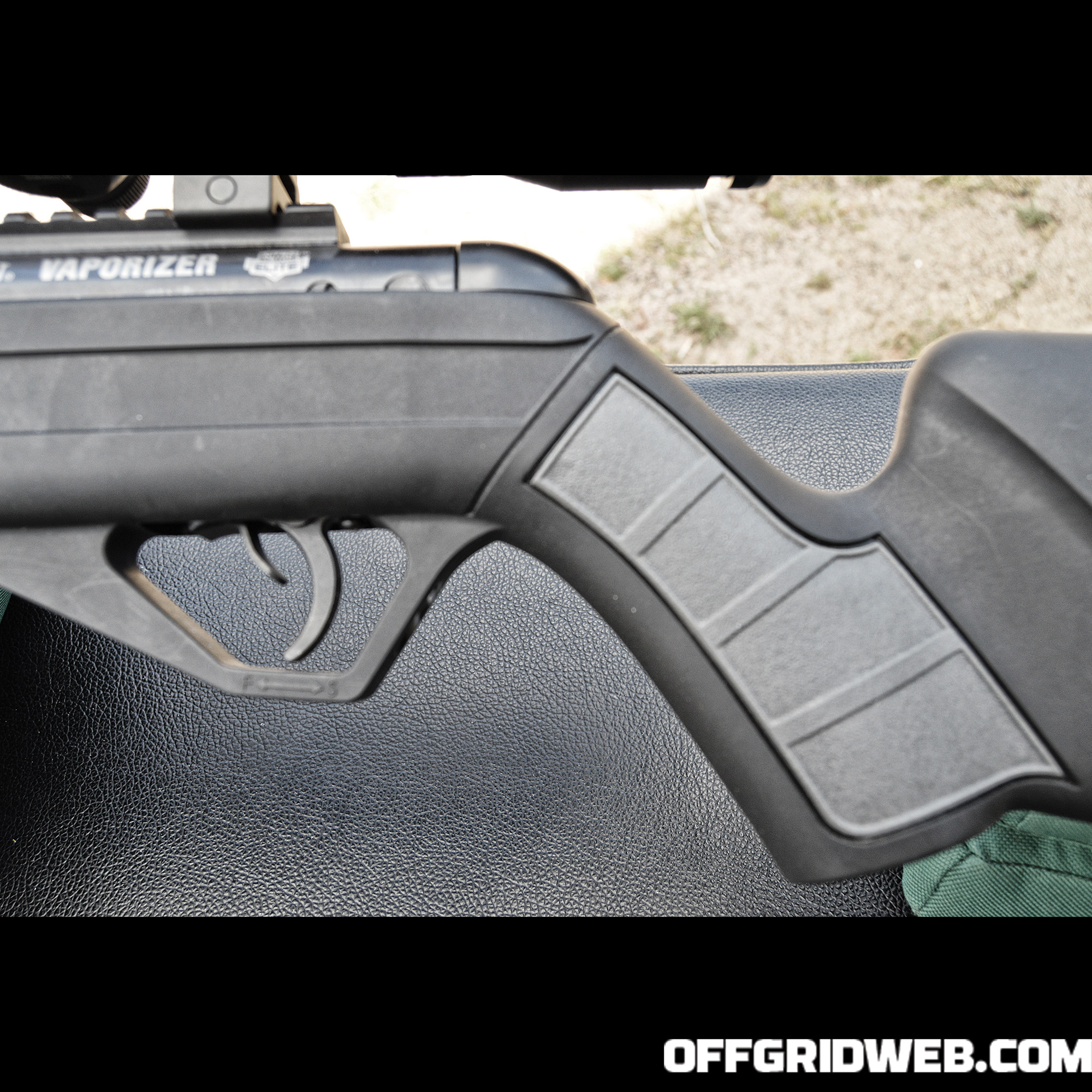
Vaporizer stylish trigger guard and pistol grip soft rubber inserts
Driven by Crosman’s Nitro Piston Elite second generation of gas piston, it can be considered to be in the magnum class as well. The safety is mounted inside the trigger guard and easily manipulated with the trigger finger without having to adjust the shooting hand position. Besides including the optic with the rifle, there’s a front and rear sight, which aren’t always standard on modern air rifles anymore. They’re plastic, but the rear sight is adjustable for windage and elevation. Additionally, sling attachments come standard on the Vaporizer. Its point of origin is China.
How did they shake out when slinging lead downrange? Keep in mind that the ASP20 was Sig Sauer’s first foray into the break-barrel airgun realm. Crosman/Benjamin, on the other hand, has experience in making airguns since the 1890s. Although most were CO2 or multi-pump models, they’ve been producing break-barrels for a long time.
Cocking wasn’t difficult with either rifle, although it wouldn’t be recommended to start young shooters with powerful springers like these. Cocking does take effort, and there’s some recoil that the rubber buttpad doesn’t mitigate. A shooter may tire quickly if shooting for any length of time. Plus, while both rifles are equipped with permanently affixed suppression technology, neither would be considered “backyard friendly” unless you have a pretty big backyard.
While you won’t necessarily need ear protection with these airguns, it’s not a bad idea. Out of the box, the trigger pull on the ASP20 MatchLite trigger averaged 3 pounds, 2.8 ounces. The Vaporizer’s trigger averaged 6 pounds, 1.5 ounces. Typically, since these are loaners, the triggers are left as they come from the factory, but they’re adjustable for both pull length and weight.
The accompanying table shows velocity (fps), foot-pounds of energy (fpe), and grouping with various pellets.
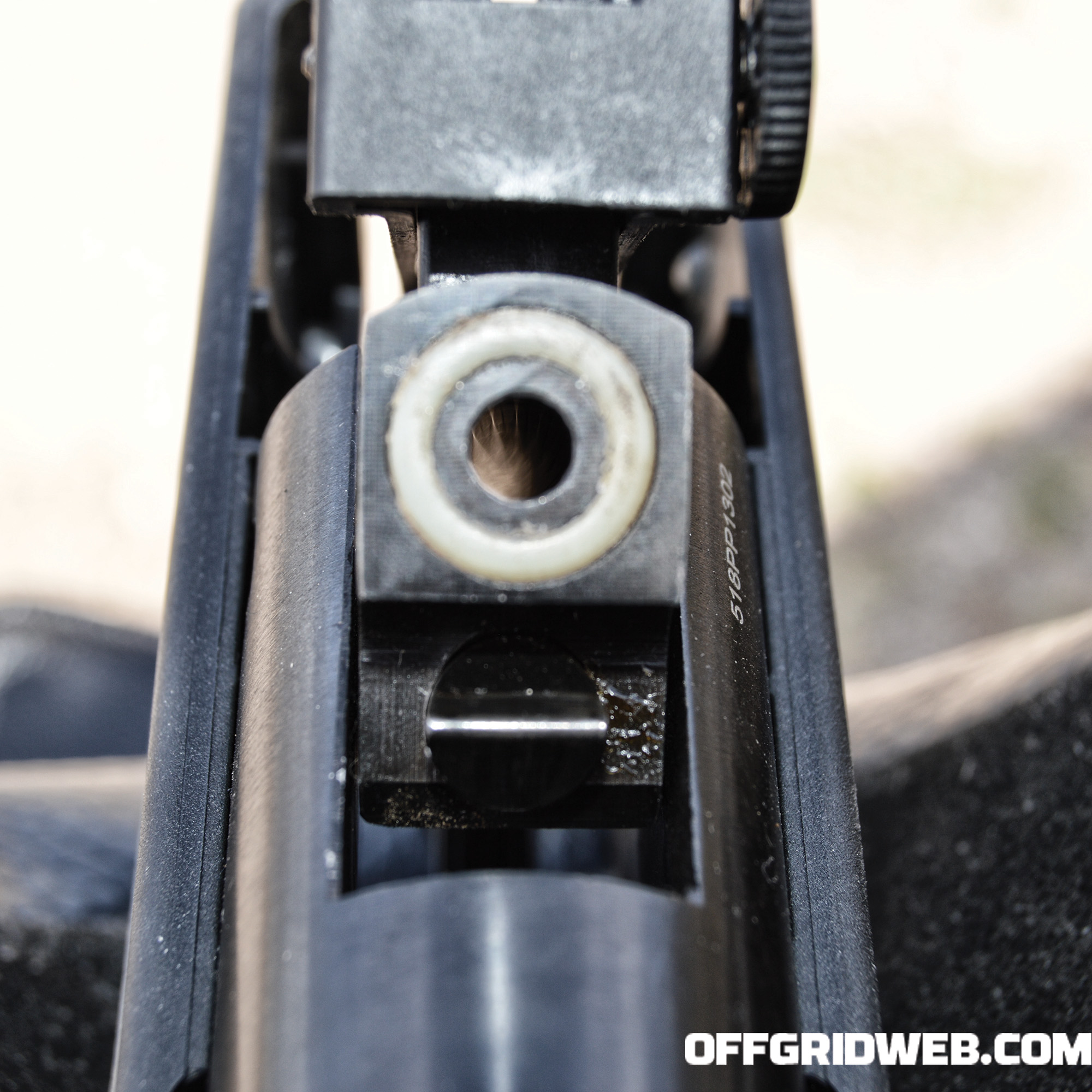
Closeup of Vaporizer barrel latch detent
Pros
> Both airguns come with a five-year warranty, which shows the commitment to quality that these manufacturers are making.
> Both airguns have nicely finished metal and good fit to stock, with the ASP20 having the edge in this category.
> The ASP20 is entirely made in the USA.
> The Whiskey3 is an excellent scope to go with the ASP20 (sold separately or as part of a kit) and provides a pellet drop compensating elevation turret.
> The Vaporizer includes a decent CenterPoint scope in the MSRP and has extras like open sights and sling attachment points. In the past, cheap scopes were thrown in to entice the buyer while allowing the manufacturer to remain at a competitive price point. Now good-quality scopes have come down in price so that very serviceable models can be included with some air rifles on the market and still be competitive.
Cons
> Use of plastic triggers
> Thicker or spongier buttpads are in order if using these air rifles over a long shooting session.
> ASP20 has a solid, nicely styled stock that’s comfortable. My concern was the slickness of it, except where laser etching was done on the pistol grip and forend. If hunting in a wet environment, the ability to attach a sling would be important.
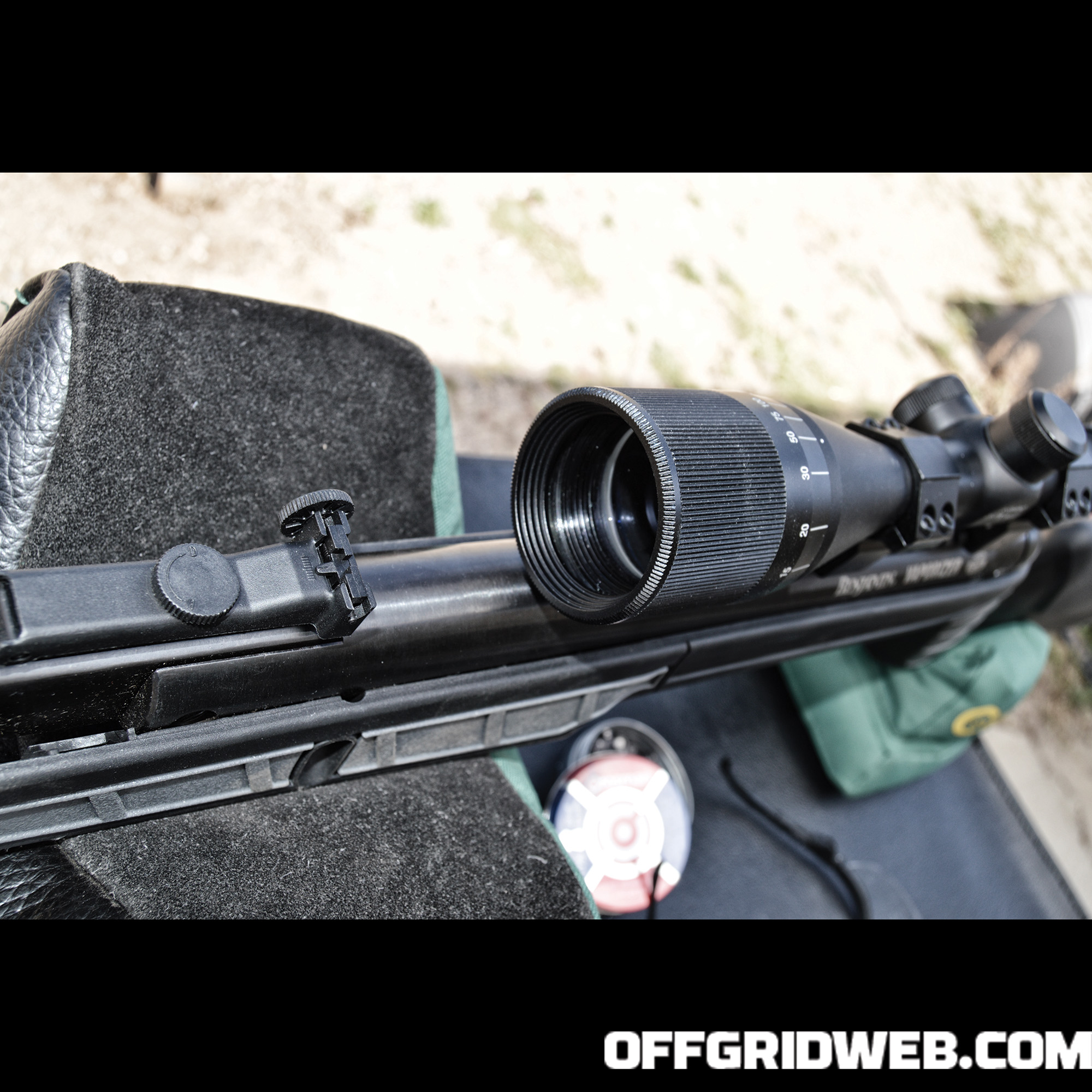
Bottom Line
Both of these airguns are also available in a .177 model. These airguns are relatively inexpensive and easy to use, operate, and maintain. They provide plenty of power as critter-getters and do so with relative quietness — more so than firearms. Either would be a good choice should you need to bug out in a SHTF scenario, depending on your potential quarry and the power level needed. The wise prepper would give due consideration to including at least one of these in their kit or bug-out bag.
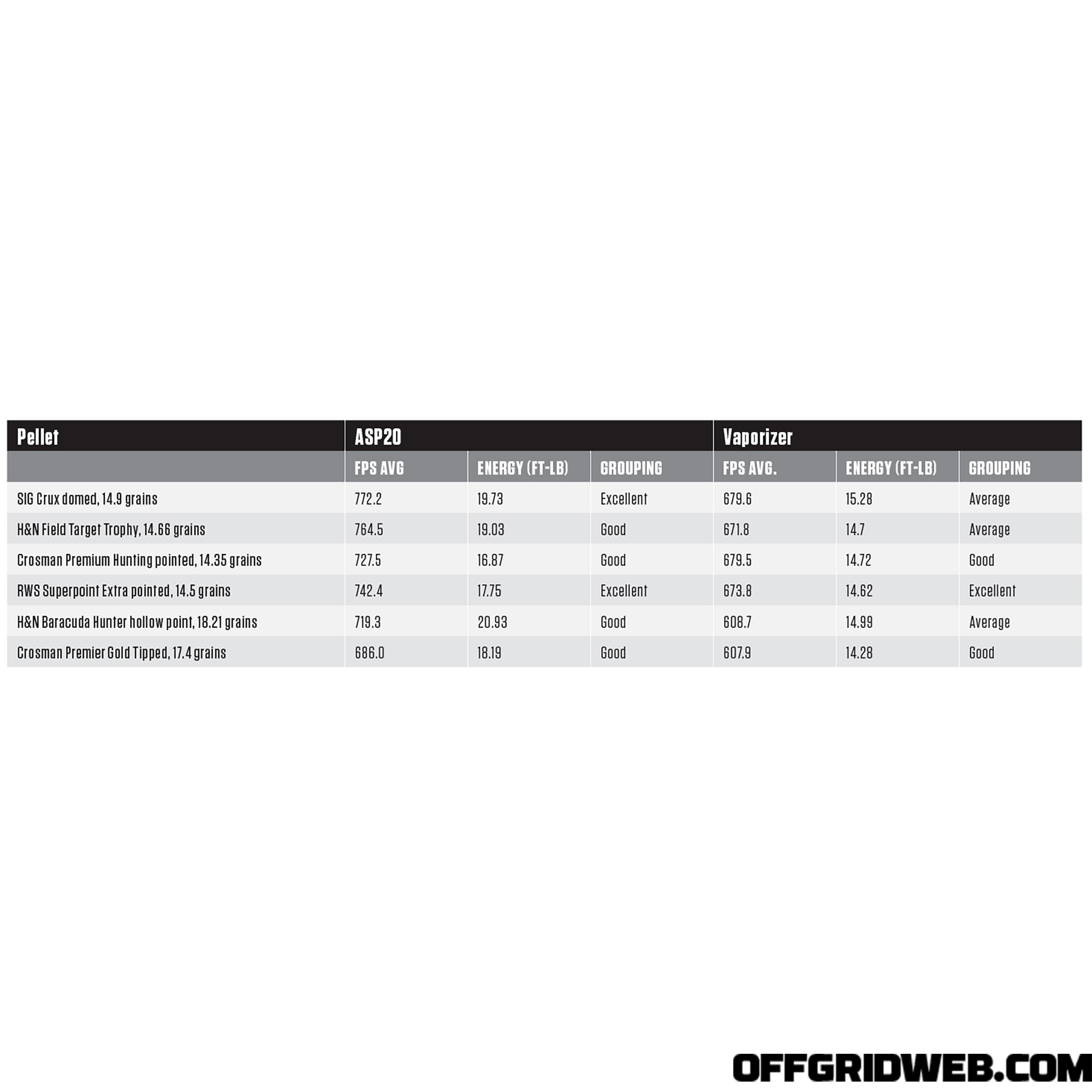
Benjamin Vaporizer Airgun
Length: 46.5 inches
Weight: 8.7 pounds
Caliber: .22
Stock: Synthetic
Sights: CenterPoint 3-9×40 AO scope plus open sights
MSRP: $260
URL: www.crosman.com
SIG Sauer ASP20 Airgun
Length: 45.6 inches
Weight: 9.7 pounds
Caliber: .22
Stock: Wood or synthetic
Sights: None (unless purchased as kit w/scope)
MSRP: $400 synthetic; $490 wood (w/Whiskey3 scope: $580; $670)
URL: www.sigsauer.com
Never fire your break-barrel airgun without a pellet in the chamber! Dry-firing can permanently damage these types of airguns. Additionally, don’t put your favorite firearm scope on one of these babies, because they generate a unique recoil impulse that’s both backward and forward each time the gun is fired. This can destroy scopes that aren’t designed to handle it.
 STAY SAFE: Download a Free copy of the OFFGRID Outbreak Issue
STAY SAFE: Download a Free copy of the OFFGRID Outbreak Issue
No Comments